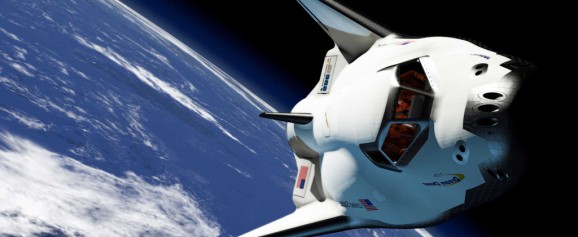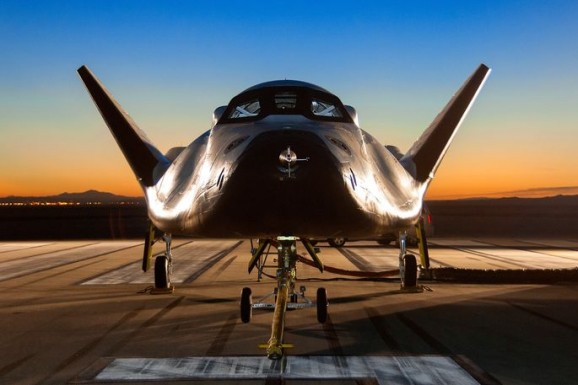Meet Dream Chaser, America’s Next Space Shuttle
This article is more than 2 years old
 As you probably know, President Obama announced his decision to end NASA’s space shuttle program Constellation back in 2010. Since then, the US has been paying to transport astronauts to the ISS aboard Russian Soyuz capsules. NASA designed the four-person Space Launch System, a heavy launch vehicle, to replace the retired shuttles. So I’ve just been waiting patiently for that to come to fruition, somehow unaware of the Dream Chaser spacecraft, a commercial spaceflight transport system that will be able to take a crew of seven astronauts to the ISS, despite being about 1/3rd the size of a conventional shuttle.
As you probably know, President Obama announced his decision to end NASA’s space shuttle program Constellation back in 2010. Since then, the US has been paying to transport astronauts to the ISS aboard Russian Soyuz capsules. NASA designed the four-person Space Launch System, a heavy launch vehicle, to replace the retired shuttles. So I’ve just been waiting patiently for that to come to fruition, somehow unaware of the Dream Chaser spacecraft, a commercial spaceflight transport system that will be able to take a crew of seven astronauts to the ISS, despite being about 1/3rd the size of a conventional shuttle.
The Dream Chaser will ride aboard an Atlas 5 rocket, which will propel the craft into low Earth orbit, potentially ferrying astronauts to the ISS. Service—or some kind of crewed mission—is expected to begin in 2017, with the first orbital crewless flight in late 2016. Dream Chaser’s first unmanned flight occurred in 2013, when it flew successfully but crashed due to a malfunction in its landing gear. Actually, the vehicle flipped over at the very end, coming to rest in an upright position, after which the malfunctioning left landing gear deployed. I like a spacecraft with a sense of humor. Despite the rocky ending, the flight was regarded as an overall success.
 Dream Chaser was built by the Sierra Nevada Corporation, and it’s one of three potential commercial transport systems that are part of the space agency’s Commercial Crew Development process. NASA is expected to choose one or two of the these systems to take astronauts to the ISS. SpaceX’s Dragon is one, and Boeing’s CST-100 is the other, and so far all three have met target milestones. The teams are vying for the privilege of becoming NASA’s main mode of near-Earth orbit transit, kicking off the era of private commercial spaceflight for both crews and cargo.
Dream Chaser was built by the Sierra Nevada Corporation, and it’s one of three potential commercial transport systems that are part of the space agency’s Commercial Crew Development process. NASA is expected to choose one or two of the these systems to take astronauts to the ISS. SpaceX’s Dragon is one, and Boeing’s CST-100 is the other, and so far all three have met target milestones. The teams are vying for the privilege of becoming NASA’s main mode of near-Earth orbit transit, kicking off the era of private commercial spaceflight for both crews and cargo.
That shift will also usher in another change, with the privatization of spaceflight beyond near-Earth orbit, to places such as Mars and asteroids. SpaceX, after all, is planning on taking people to colonize the Red Planet, but let’s not get ahead of ourselves, there are still more milestones to meet, and lots of fun to be had watching it happen.












